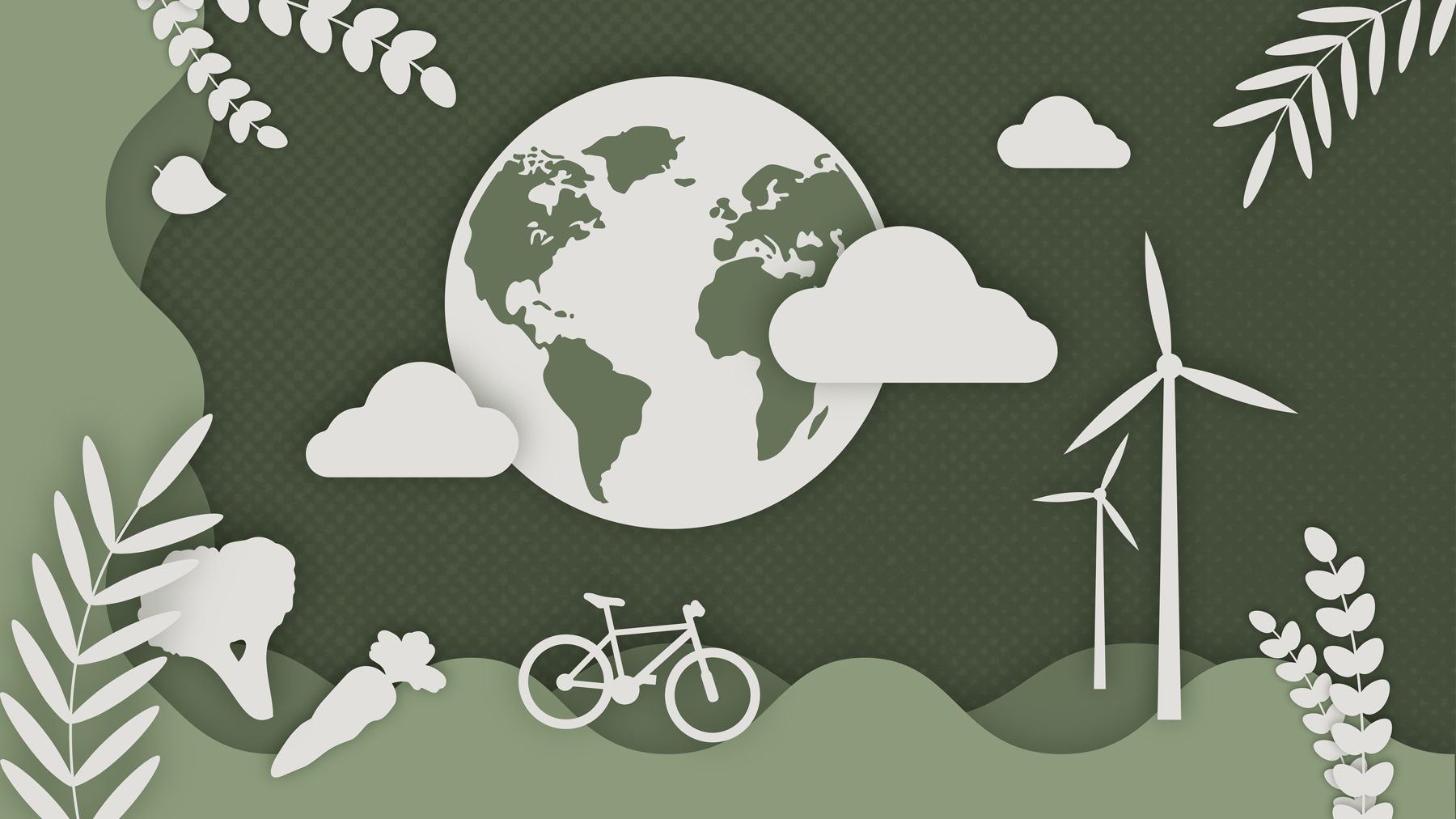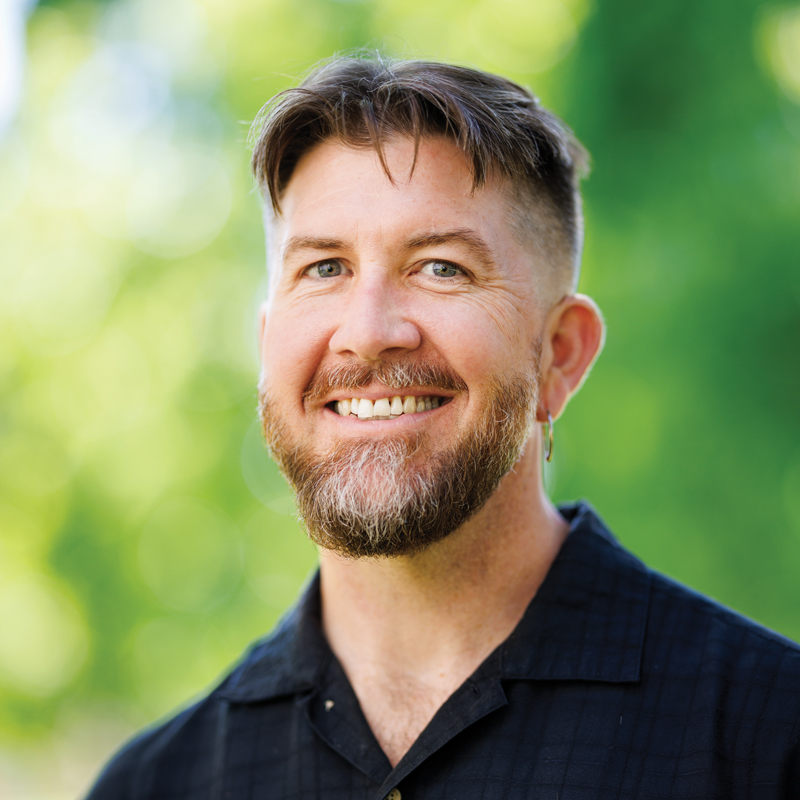Is There Hope in the Climate Crisis?
Professor Erin Pearse breaks down this moment in the fight against climate change.

Mathematics professor Erin Pearse thinks a lot about climate change and the solutions that will ease it. As the director and co-founder of Cal Poly’s Initiative for Climate Leadership and Resilience (ICLR), he fosters a hub for the university’s expertise and helps connect research with funding. He’s also an advocate, advisor, activist and researcher with several sustainability organizations on and off campus.
Cal Poly Magazine sat down with Pearse for a reality check about the climate movement and his perspective on solutions making a difference in our state.

Mathematics professor Erin Pearse. Photo by Joe Johnston.
You’re a mathematics professor. How did you get involved in climate work?
After being a postdoc for seven years, I realized the climate crisis was worse than I thought. I intellectually understood the situation, but I didn’t take the time to understand it with my heart and really meditate on the impacts of these forecasts. A hurricane won’t wipe us out here in San Luis Obispo, but you can’t avoid the effects of large-scale crop failures: political turbulence and social unrest. I don’t want my kids to die fighting over food. This is why I started as an activist, because watching this happen and feeling powerless and incapacitated — it was just unbearable.
I launched a chapter of Sunrise Movement here on campus and tried to get an Extinction Rebellion group going. Then I realized that in San Luis Obispo, people don’t need to be told that there’s a problem. They want to know how to solve it, so I started thinking about how we can be more effective.
As a mathematician, I have no real useful skills for dealing with climate change other than being a bit analytical. But as a tenured professor, I have resources, time and energy I can put toward organizing activities that will help the people who do have those skills to get stuff done. That led to this research collaborative idea, which is a way that we set up projects in the ICLR.
Have you seen anything that gives you hope that we can solve this crisis?
At the city and county level up and down the coast, one of the things that really boosted my optimism was seeing how many people have already devoted their lives to this — you’ve just never heard of them. Part of the reason we organize the Climate Solutions Now virtual conference every year is to get students aware of all these jobs. As I’ve met more people from these agencies, I realize there are dozens of teams all over the place that are worried as heck about this and have been changing things for decades.
In North America, around 80 percent of greenhouse gas emissions come from cities, which means they’re under municipal control, which means just a dozen voters can make the difference one way or another. Most of the stuff that needs to be done, we can do locally at a small scale. San Luis Obispo has been a bellwether in the past: you think of the smoking ban and the drive-thru ban. California tends to lead the way for the country. Then all of a sudden, something we do in this city or county could actually have state, national or international consequences.
What climate-focused research are you excited about?
The Sustainable Land Initiative (SLI) is the thing I could really see catching on statewide or even nationally. The mission of the project is to create a regional ecosystem where landowners have the means of easily and rapidly adopting sustainable practices to achieve environmental objectives and reduce climate impacts. SLI is a project spearheaded by Upper Salinas-Las Tablas RCD, one of the local resource conservation districts (RCDs). RCDs are unfunded mandates of the government and depend totally on grants. RCDs support farmers with conservation practices and technical assistance. Today, it’s largely focused on improving soil health, avoiding carbon dioxide emissions, or increasing sequestration — things like soil carbon amendment (compost and biochar), cover crops and nutrient management.
SLI is an administrative accelerator that allows RCDs to parallelize projects. It has a big equity component because we can put small farming operations in with larger ones, which allows them to compete for resources at a higher level. The pilot project has reduced a one- to three-year implementation timeline down to six to eight weeks.
What solutions can truly make an impact?
It’s important to make decisions and actually alter your own behavior. Years ago, somebody told me that I didn’t believe in the climate crisis. They said, “If you did, you’d have solar panels on your house, you’d have an electric car, you’d stop eating meat.” That comment really stuck with me. I should [make these changes] as soon as possible. And [when I did], I found out that all of them save you money.
There’s this overwhelming misperception that the climate crisis is something for the environmental engineers and electrical engineers to sort out — they’re going to do it with technology. But that’s wrong — solving the climate crisis requires everyone’s input. The flip side of it being this huge, multifarious problem with all these different facets that’s impossible to wrap your head around is that there are opportunities everywhere for attacking it. I don’t want to specify particular solutions, because that makes it sound like there’s a silver bullet for solving this problem. It’s a tapestry. You just have to learn a bit more about it until you find something that coincides with your other interests, skills and aptitudes.


